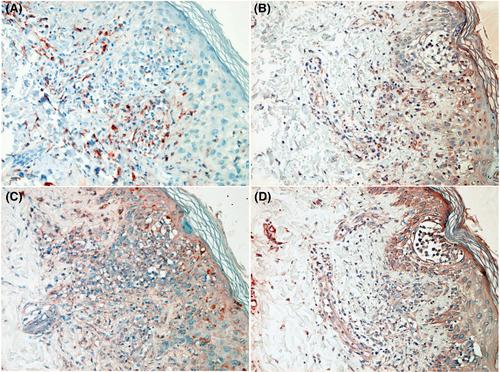The significance of M1-polarized CD163+ macrophages in acute graft-versus-host disease (GVHD): Possible mechanisms of GVHD in the development of skin lesions
Abstract
Objectives
Graft-versus-host disease (GVHD) is an important complication of bone marrow transplantation. Recent reports suggest the significance of T-cell subsets (Th1, Th17, and cytotoxic CD8+ T cells) as well as CD163+ macrophages in the development of cutaneous GVHD. CD163+ macrophages produce various chemokines to establish the immunological microenvironment following stimulation by stromal factors in lesional skin. Thus, the purpose of this study is to determine the main source of IFN-inducible chemokines in the lesional skin of GVHD.
Methods
We employed immunohistochemical (IHC) staining for CD163 as well as interferon (IFN)-inducible chemokines (CXCL9, CXCL10, CXCL11) to determine if the main source of IFN-inducible chemokines in the lesional skin of GVHD was CD163+ macrophages. Moreover, we investigated the possible cytokine profiles of lesional skin in GVHD by evaluating phospho-signal transducer and activator of transcription (pSTAT) expression in epidermal keratinocytes.
Results
Immunohistochemical staining of serial sections for CD163 revealed that CXCL9-expressing cells, CXCL10-expressing cells, and CXCL11-expressing cells were detected in adjacent to CD163+ TAMs in the dermis. In contrast, there were no CCL17-expressing cells or CCL22-expressing cells in the dermis. The nuclei of epidermal keratinocytes in GVHD expressed pSTAT1, pSTAT3, and pSTAT5B.
Conclusions
The chemokine expression patterns on CD163+ macrophages matched the expected phosphorylation pattern of epidermal STATs. Our present study suggested that CD163 + macrophages may be a therapeutic target in GVHD.


 求助内容:
求助内容: 应助结果提醒方式:
应助结果提醒方式:


